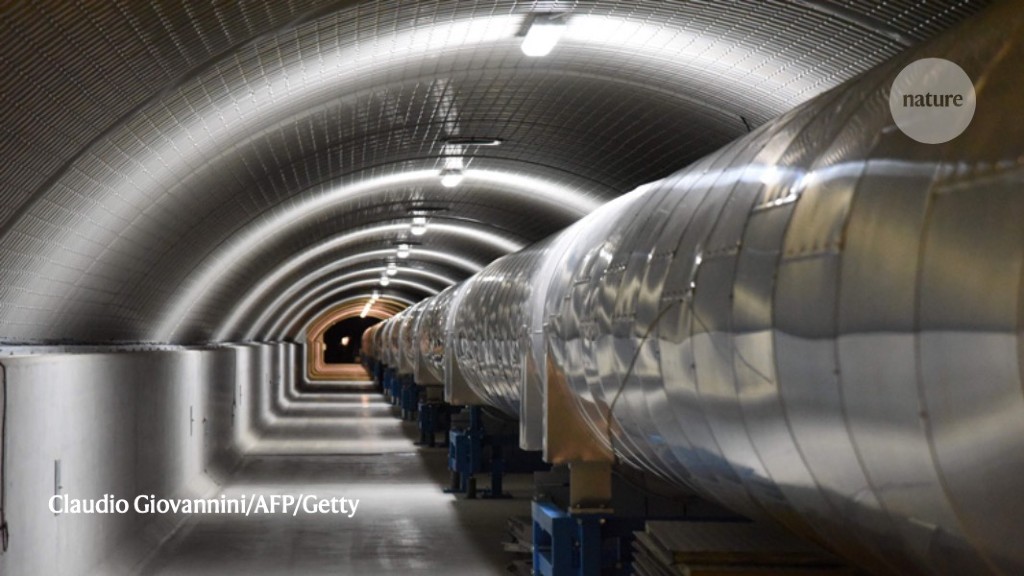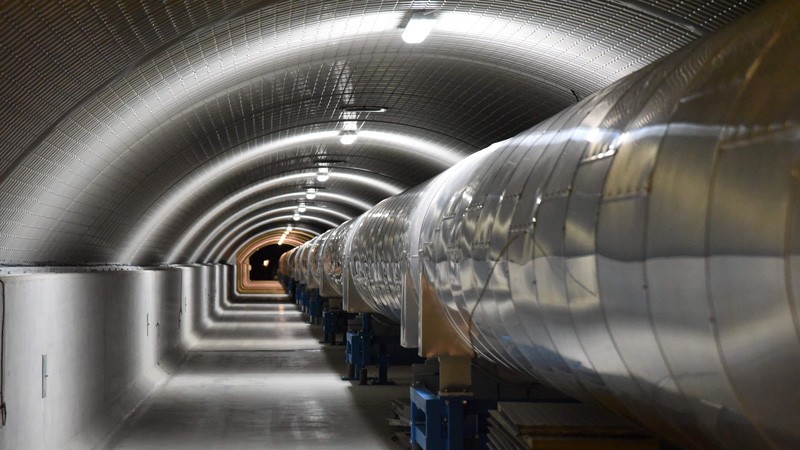

Italy’s Virgo gravitational-wave detector has been required to close down. Credit: Claudio Giovannini/AFP/Getty
The vast, sparsely inhabited Argentinian Pampas would seem perfect for social distancing. In the Mendoza area, the Pierre Auger Observatory near Malargue consists of more than 1,600 car-sized plastic tanks filled with water, scattered throughout some 3,000 square kilometres of land that is normally checked out only by grazing cattle.
Yet even here, at the world’s biggest cosmic-ray observatory, the coronavirus pandemic is leaving its mark. Job manager Ingo Allekotte, a physicist who is based 1,000 kilometres south at the Bariloche Atomic Center in Argentina, says that since of a nationwide lockdown, maintenance staff are barred from doing routine repair work at the detectors, which include changing failed batteries. “As a result, with a longer term absence of upkeep, private detectors will go ‘dark’,” he says. Currently, the observatory has had to close down its fluorescence detectors, which keep track of the sky above for the ultraviolet flashes of cosmic rays.
Scores of other ‘big physics’ centers and astronomical observatories around the world have actually needed to minimize their operations or, in many cases, entirely suspend them, in response to the pandemic.
In the United States, the country that now has the fastest growing number of verified COVID-19 cases, lots of big labs have needed to basically halt operations, following lockdown orders from guvs or cautionary measures from their management.
Most of the United States Department of Energy (DOE)’s massive network of 17 nationwide laboratories has actually switched to a telecommuting mode of operation, and significant experiments have actually been shut down. One is an accelerator that smashes gold atoms at Brookhaven National Lab in Upton, New York, which ended its data-taking operate on 20 March. “This was 3 months earlier than prepared,” says Helen Caines, a physicist at Yale University in New Haven, Connecticut, who leads the experiment.
The same fate befell the National Ignition Center, the world’s biggest laser, designed for nuclear-fusion experiments at Lawrence Livermore National Lab in California. However some DOE lab facilities– and in specific its synchrotron light sources and four supercomputing centres– are soldiering on, and contributing work to COVID-19 research study.
Upgrades on hold
Some big-physics jobs are still gathering information. Large-scale experiments run by international collaborations have long been moving towards the ability to keep up minimal on-site support, as team members keep an eye on the functioning of these tasks from all over the world, says Nigel Smith, the director of the SNOLAB underground facility, which aims to identify dark matter and neutrinos, near Sudbury, Canada. “The ability to remotely run is baked into the systems,” states Smith, who is an astroparticle physicist at nearby Laurentian University. This holds true at SNOLAB, where significant detectors are still running.
However even centers that are still able to run experiments are discovering that planned upgrades or construction will need to wait. Surface work is slowed, and trips down the 2,000- metre deep shaft to the SNOLAB halls are being limited. “It’s close quarters on the cage trip down”, which is not perfect for social distancing, states Mark Chen, who leads a partially completed– but already operating– neutrino experiment at the laboratory.
Another major underground center, the Gran Sasso National Laboratories in central Italy, is in a similar situation. Although upgrades and construction are stopped, ongoing experiments– likewise on neutrinos and dark matter– are still running in spite of the across the country lockdown. “Experiments in Gran Sasso are created to be run with no regional presence,” representative Roberta Antolini informs Nature
CERN, the world’s largest particle-physics experiment near Geneva, Switzerland, has actually needed to suspend its upgrade work on the Large Hadron Collider.
Safeguarding personnel
The Laser Interferometer Gravitational-Wave Observatory (LIGO)– with twin antennas in Livingston, Louisiana, and Hanford, Washington– and the Virgo interferometer near Pisa, Italy, both shut down on 27 March to secure the health of their personnel. The centers spot faint ripples in space-time referred to as gravitational waves, caused by enormous cosmic crashes such as black-hole mergers. Virgo had already been working on a minimal personnel of less than a lots individuals, says Virgo spokesperson Jo van den Brand, a physicist at the National Institute for Subatomic Physics in Amsterdam. But travel to Italy has become virtually impossible, and a full shutdown was the only way to safeguard their workers.
The observatories had actually planned to end their data-collecting runs at completion of April, and to start significant upgrades in May, with the aim of doubling their level of sensitivity and restarting in2022 “However all of that is difficult now,” van den Brand name states.
Still, LIGO and Virgo have actually built up a huge quantity of information throughout their latest year-long run, which had actually started on 1 April2019 The bounty consists of 56 ‘prospect’ accident events, most of which are most likely mergers of 2 great voids. The international LIGO– Virgo collaboration will now have hectic months evaluating those information, states Sebastiano Bernuzzi, a theoretical physicist at Friedrich Schiller University in Jena, Germany. Fortunately, the team is still able to use facilities such as the Leibniz Supercomputing Centre in Garching, Germany. “If high-power computing centers and the Web continue to run, we need to have the ability to keep working,” Bernuzzi states.
Business as typical
COVID-19 has not yet impacted all parts of the world in a significant way. In Sweden, the government has kept a questionable business-as-usual policy. Construction at the European Spallation Source, a modern center for neutron beams due to open in 2025 in Lund, has carried on as prepared.
The Kamioka Observatory– house to the Super-Kamiokande neutrino detector and to the Kamioka Gravitational Wave Detector (KAGRA), among other things– near Hida, Japan, has not suffered major disturbances, says Keiko Kokeyama, a physicist who works on KAGRA. Her team has actually continued the months-long, painstaking work of tuning up the brand new detector, which began operations in February.
And in China, where the coronavirus first emerged in the nation’s central Hubei province, not all areas have actually been on lockdown. In the far south, the Jiangmen Underground Neutrino Observatory (JUNO), an underground detector that will include 20,000 tonnes of mineral oil, is still under construction. “The majority of people are now back to work generally,” says Lei Liu, director of the JUNO task office. She estimates that the project will be delayed by approximately 3 months, but still intends to begin the experiment in 2022.
One location that need to be safe from coronavirus for now is the Amundsen– Scott South Pole Station. Flights to and from Antarctica have actually stopped in February as the summertime season ended up. By now, the ‘winterovers’, the skeleton personnel that stays at the station till the next summer, have been quarantined for enough time to be considered coronavirus-free. “As we showed up in November, the coronavirus had actually not yet been recognized,” states John Hardin, who works on IceCube, the cosmic neutrino observatory made of sensors embedded in a cubic kilometre of ice. “It is a strange experience,” he includes. “While we are completely isolated from the spread, not being able to be there for friends and family is hard.”
” The detector is operating and transmitting information north as typical,” states Francis Halzen, a physicist at the University of Wisconsin– Madison and representative for IceCube.
Comments
Post a Comment